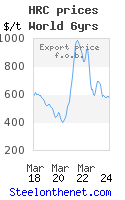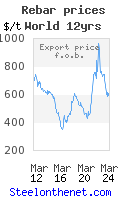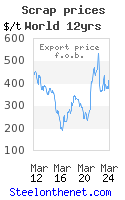Iranian steel exports on the rise
At just under 18 million tonnes last year, Iran accounted for more than half of all the steel produced in the Middle East and is becoming an important player on the world stage. It is also growing rapidly with production up 90% over the past ten years. This growth has continued into this year with crude steel production in Q1 increasing by 13% year on year, more than double the global rate of growth.
In 2016, for the first time, Iran
As would be expected, Iran has traditionally exported these semi-finished products to other countries in the Middle East and North Africa but so far in 2017 it is notable that Iranian producers are becoming bolder in their search for external markets and the main growth areas have been Thailand , Taiwan and Indonesia Afghanistan and Iraq
Conversely in Q1 this year, after a few years of stable tonnages, imports nearly halved despite a rise in demand. Traditionally the country is an important market for Russian, Chinese, Indian and Korean flat products but evidence suggests more or both HR and CR products have been sourced internally.
With enviable reserves of natural resources, being favourably situated between Europe and Asia, and having a growing internal steel industry, Iran
This report was prepared by the Iron & Steel Statistics Bureau, UK
Labels: iran steel exports, iran steel trade, iranian steel, middle east steel, steel exports, steel in iran




0 Comments:
Post a Comment
<< Home